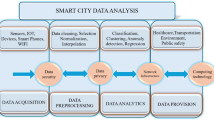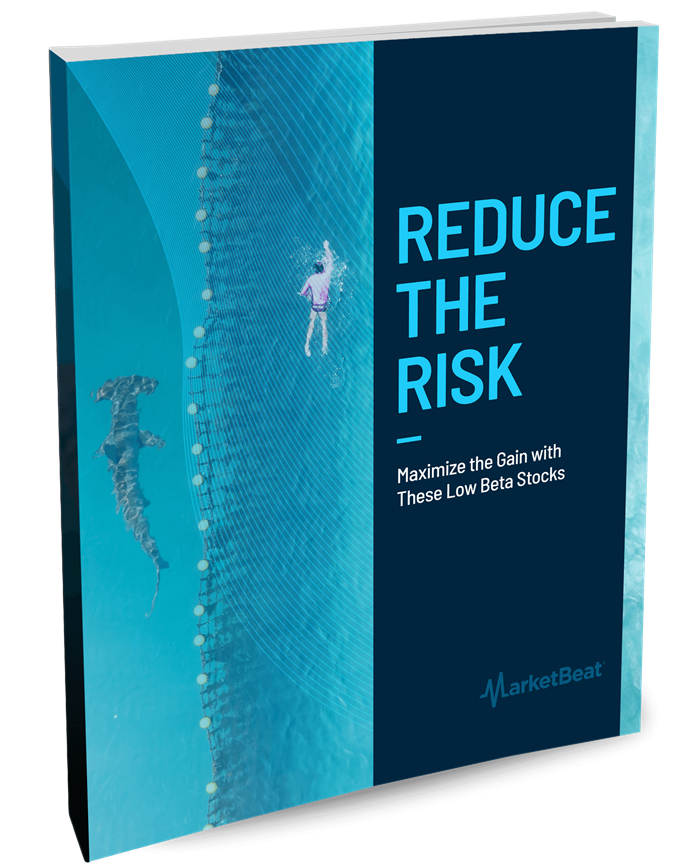Report on Urban Waste Management and its Impact on Sustainable Development Goals
Executive Summary
This report examines the critical relationship between street-level waste management and citizens’ perception of safety, a key factor in achieving the United Nations Sustainable Development Goals (SDGs), particularly SDG 11: Sustainable Cities and Communities. Leveraging artificial intelligence (AI) to analyze street-level imagery in New York City, this study quantifies how different forms of waste influence urban safety perceptions. The analysis reveals a strong negative correlation between uncontrolled waste, such as widespread litter and illegal dumpsites, and perceived safety. Conversely, properly managed waste shows a significantly weaker association. These findings underscore that dynamic environmental management practices are as crucial as static infrastructure in fostering safe and inclusive urban environments. The results provide actionable insights for urban planners and policymakers to enhance community safety and advance progress on SDG 11, SDG 12 (Responsible Consumption and Production), and SDG 10 (Reduced Inequalities) through targeted and equitable waste management strategies.
Introduction: Aligning Urban Safety with the Sustainable Development Agenda
The perception of safety is a cornerstone of sustainable urban development, directly influencing community vitality and social cohesion. This aligns with the objectives of SDG 11, which aims to make cities inclusive, safe, resilient, and sustainable. While traditional research has focused on static built environment features, this report investigates the impact of dynamic management practices, specifically street-level waste management. Effective waste management is a primary target of both SDG 11.6, which seeks to reduce the adverse environmental impact of cities through improved municipal waste management, and SDG 12, which promotes sustainable consumption and production patterns by reducing waste generation. This study addresses a critical gap by empirically demonstrating how the quality of waste management services directly shapes the sense of safety essential for sustainable communities.
Methodology: An AI-Driven Framework for Urban Analysis
Quantifying Perceived Safety
A deep learning model was trained using the Place Pulse 2.0 dataset to predict safety perception scores from street-view images (SVI). This model was then applied to a comprehensive collection of SVIs from four boroughs of New York City (Manhattan, Brooklyn, Queens, and the Bronx) to generate a high-resolution spatial map of perceived safety. This quantitative approach provides an objective baseline for analyzing how environmental factors contribute to the creation of safe urban spaces as envisioned in SDG 11.
Classifying Street-Level Waste in line with SDG Targets
Specialized computer vision models were developed to detect and classify street-level waste from SVIs. Waste was categorized to reflect its alignment with sustainable management practices, providing a direct link to SDG 11.6 and SDG 12 targets.
- Controlled Waste: Properly bagged or contained waste awaiting scheduled municipal collection. Its presence indicates a functioning waste management system.
- Uncontrolled Waste: Materials disposed of improperly, which signals a failure in management systems and hinders progress toward sustainability goals. This category includes:
- Construction Waste
- Widespread Litter
- Uncontrolled Litter Dumpsites
Key Findings: The Link Between Waste Management and Urban Sustainability
Uncontrolled Waste Severely Degrades Perceived Safety
The analysis reveals a strong and consistent negative relationship between the presence of any form of uncontrolled waste and perceived safety. Locations with widespread litter, construction debris, or illegal dumpsites had significantly lower safety perception scores. This finding is critical for SDG 11, as visible disorder and neglect create environments that feel unsafe, potentially undermining social inclusion and community engagement.
Controlled Waste Shows a Weaker Association with Safety Perception
In contrast, controlled waste (properly bagged waste) exhibited only a minimal negative association with perceived safety. This suggests that citizens’ safety perceptions are influenced not by the mere presence of waste, but by the effectiveness and orderliness of the management system. This distinction reinforces the importance of reliable municipal services as a key strategy for achieving the targets of SDG 11.6.
Spatial Disparities and SDG 10 (Reduced Inequalities)
The spatial distribution of waste highlights significant inequalities. Uncontrolled waste was found to be disproportionately concentrated in peripheral and lower-income areas, while controlled waste was more common in central, higher-density districts. This disparity in service quality and environmental condition represents a form of environmental injustice, directly challenging the ambitions of SDG 10 (Reduced Inequalities) and demonstrating how inequitable service provision can undermine the goal of creating inclusive cities for all.
Dynamic Management as a Key Lever for Sustainable Cities
The report confirms that dynamic management factors, particularly waste management, are among the most influential variables shaping safety perception, comparable in importance to static features like urban greenery and building design. This insight offers a cost-effective and impactful pathway for cities to improve urban environments and make tangible progress toward SDG 11 targets.
Policy Implications and Recommendations for Achieving the SDGs
Prioritizing Waste Management as a Core Urban Safety and Sustainability Strategy
The findings call for urban policymakers to recognize effective waste management not merely as a sanitation issue, but as a fundamental component of public safety, social equity, and urban sustainability strategies. By addressing waste, cities can simultaneously advance multiple SDGs.
Recommendations for Action
- Enhance Monitoring and Response Systems: Implement AI-driven monitoring systems using street-level data to rapidly identify and address uncontrolled waste hotspots. This proactive approach directly supports the objectives of SDG 11.6 by improving the efficiency of municipal waste management.
- Ensure Equitable Service Distribution: Prioritize and allocate waste management resources to underserved and peripheral communities where uncontrolled waste is most prevalent. This action is essential for promoting environmental justice and making progress on SDG 10 and SDG 11.
- Integrate Environmental Management Strategies: Combine improved waste collection with other environmental initiatives, such as urban greening and infrastructure maintenance. An integrated approach can create synergistic effects, enhancing perceived safety, promoting well-being (SDG 3), and improving access to safe public spaces (SDG 11.7).
- Promote Circular Economy Principles: Develop and enforce policies that encourage waste reduction, reuse, and recycling at the source. This aligns with the core principles of SDG 12 and reduces the overall burden on municipal waste systems, contributing to cleaner and safer urban environments.
Analysis of Sustainable Development Goals in the Article
1. Which SDGs are addressed or connected to the issues highlighted in the article?
The article directly addresses and connects its research to two specific Sustainable Development Goals (SDGs):
- SDG 11: Sustainable Cities and Communities: The article explicitly states that the perception of urban safety is a critical component of SDG 11. It quotes the goal’s aim to “make cities and human settlements inclusive, safe, resilient, and sustainable.” The research focuses on how urban management practices, specifically waste management, influence the perception of safety, which is a key element in achieving the overall objective of SDG 11. The study argues that fostering a sense of safety is crucial for urban inclusivity and sustainability.
- SDG 12: Responsible Consumption and Production: The article also connects its work to SDG 12 by highlighting the goal’s emphasis on waste management. It states, “SDG 12 reinforces this priority by emphasizing waste reduction through prevention, recycling, and reuse.” The study’s detailed analysis of controlled versus uncontrolled waste directly relates to the principles of responsible production and consumption, as effective waste management is a prerequisite for achieving waste reduction and promoting a circular economy.
2. What specific targets under those SDGs can be identified based on the article’s content?
Based on the article’s content, the following specific SDG targets can be identified:
-
Target 11.6: By 2030, reduce the adverse per capita environmental impact of cities, including by paying special attention to air quality and municipal and other waste management.
The article directly names this target, stating, “Specifically, waste management is identified as a key target under SDG 11, particularly Target 11.6, which addresses the reduction of cities’ adverse environmental impact through municipal waste management.” The entire study is framed around analyzing the effectiveness of municipal waste management by examining the presence of controlled and uncontrolled waste and its impact on the urban environment and citizens’ perceptions. -
Target 12.5: By 2030, substantially reduce waste generation through prevention, reduction, recycling and reuse.
While the article does not cite the target number, it directly references its content by stating that SDG 12 “emphasiz[es] waste reduction through prevention, recycling, and reuse.” The research provides a methodology to identify, classify, and map different forms of waste, distinguishing between properly managed (controlled) waste destined for collection and improperly disposed (uncontrolled) waste. This analysis is fundamental for developing targeted strategies aimed at preventing littering and illegal dumping, thereby contributing to the overall reduction of waste generation as outlined in Target 12.5.
3. Are there any indicators mentioned or implied in the article that can be used to measure progress towards the identified targets?
Yes, the article develops and utilizes several specific, measurable indicators that can be used to track progress towards the identified targets, even though it does not refer to the official UN indicator codes.
- Perceived Safety Score: The study develops a quantitative “safety perception score” using AI to analyze street-view imagery. This score serves as a direct indicator of the social and psychological impact of the urban environment. A higher average safety score, particularly in areas previously identified with poor waste management, would indicate progress in creating safer and more inclusive cities (SDG 11). The article demonstrates a strong negative correlation between uncontrolled waste and this score, linking it directly to the environmental impact mentioned in Target 11.6.
-
Classification and Quantification of Street Waste Types: The research methodology involves the systematic detection and classification of waste into distinct categories:
- Controlled waste (bagged waste)
- Uncontrolled waste (construction waste, widespread litter, uncontrolled litter dumpsites)
The article provides specific counts for these categories (e.g., “1771 cases of widespread litter, 614 uncontrolled litter dumpsites”). These counts serve as direct indicators. A reduction in the number of instances of “uncontrolled waste” would be a clear measure of progress in reducing the adverse environmental impact of cities (Target 11.6) and reducing waste generation (Target 12.5).
- Spatial Distribution of Waste: The article maps the geographic locations of different waste types, identifying hotspots of uncontrolled waste. This spatial analysis serves as a powerful indicator for monitoring service disparities and the effectiveness of municipal waste management. Tracking changes in the spatial concentration of uncontrolled waste over time can measure progress towards more equitable and effective waste management under Target 11.6.
4. Table of SDGs, Targets, and Indicators
| SDGs | Targets | Indicators |
|---|---|---|
| SDG 11: Sustainable Cities and Communities | Target 11.6: By 2030, reduce the adverse per capita environmental impact of cities, including by paying special attention to air quality and municipal and other waste management. |
|
| SDG 12: Responsible Consumption and Production | Target 12.5: By 2030, substantially reduce waste generation through prevention, reduction, recycling and reuse. |
|
Source: nature.com







